Following up on an outstanding title-winning Championship campaign at the helm of Leicester City, Enzo Maresca is now busy making waves as a top-flight head coach with Chelsea.
Pep Guardiola’s former assistant has wasted no time at all in stamping his tactical imprint on the Blues’ squad, and as we approach the halfway stage of 2024/25 you can see how much his players are enjoying the style of play.
Inspiring collective and individual improvements, Maresca should feel very proud of the work he has done at Stamford Bridge this term.
What is his approach? Let’s take a closer look…
Intelligent positional play
Moving away from the 4-3-3 he mainly deployed at Leicester, the 44-year-old has preferred a 4-2-3-1 at Chelsea.
It is a shape that suits star man Cole Palmer, getting him into better areas where he can linkup with striker Nicolas Jackson.
In possession the system fluidly morphs into something different.
Almost always inverting one of his full-backs into central midfield, the left or right-back will either join the sitting midfielder in a double pivot that forms a 3-2-5, or as shown below, the shape will be more of a 3-3-4.
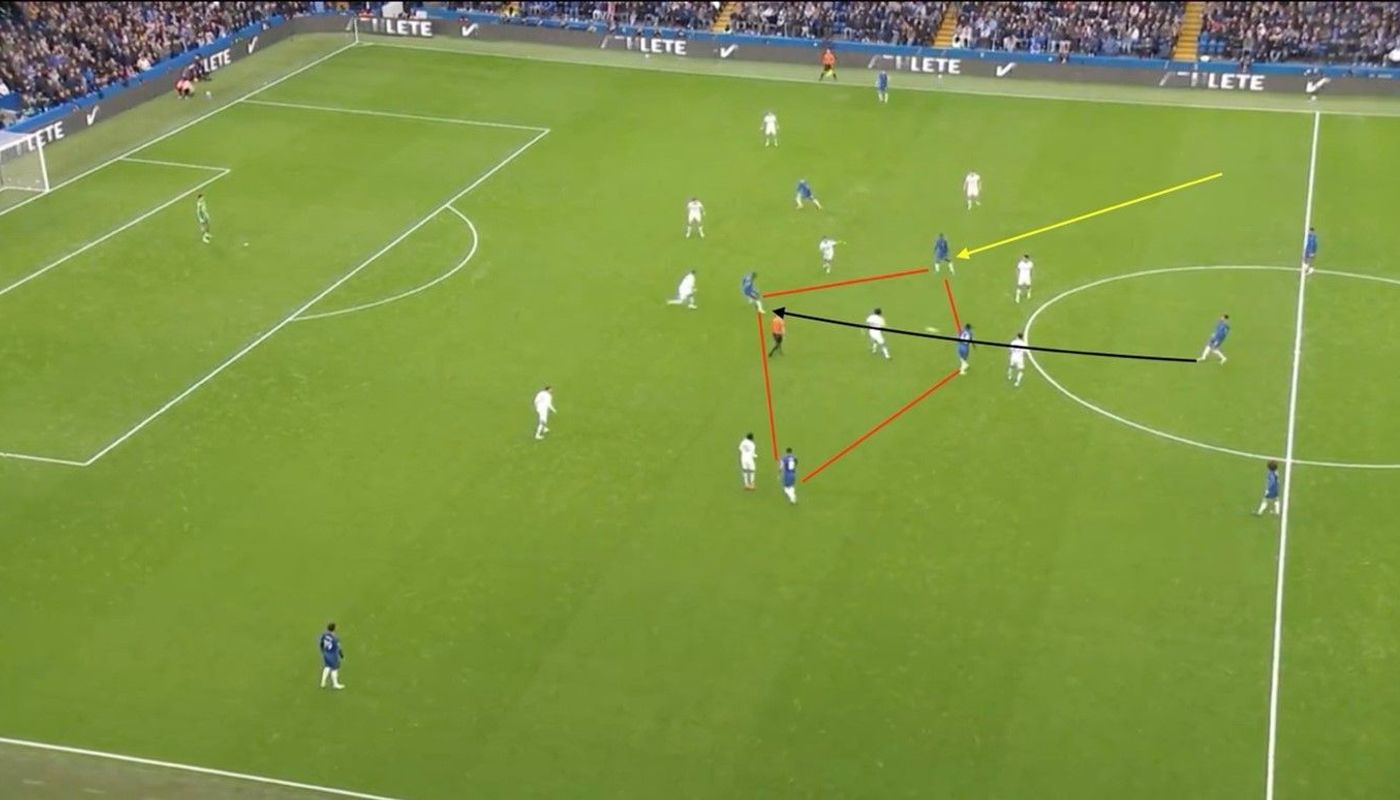
In this instance, Moises Caicedo has inverted from right-back, while Jackson drops off the front to receive a pass, effectively creating a 3-4-3 Diamond.
It becomes an overload unless Aston Villa’s centre-back follows Jackson in, which he does, leaving Unai Emery’s side with a vulnerable 3v3 behind him.
Both wide men, as is Maresca’s blueprint, stay very wide in the build-up phase.
This stretches play, creates holes between full-backs and central defenders, and pins their opponents’ rearguard back.
From this move, Chelsea’s left-sided No 8, Enzo Fernandez, made a forward run into one of those half spaces between full-back and centre-back to link the move, before bursting into the box to score.
Breaking open a back five
Although Maresca is consistent with the way he builds with a back three and pushes a full-back infield or high, he does encourage variety in regard to his players’ positioning.
Look here (below) at how they cleverly prise open Brentford’s 5-3-2.
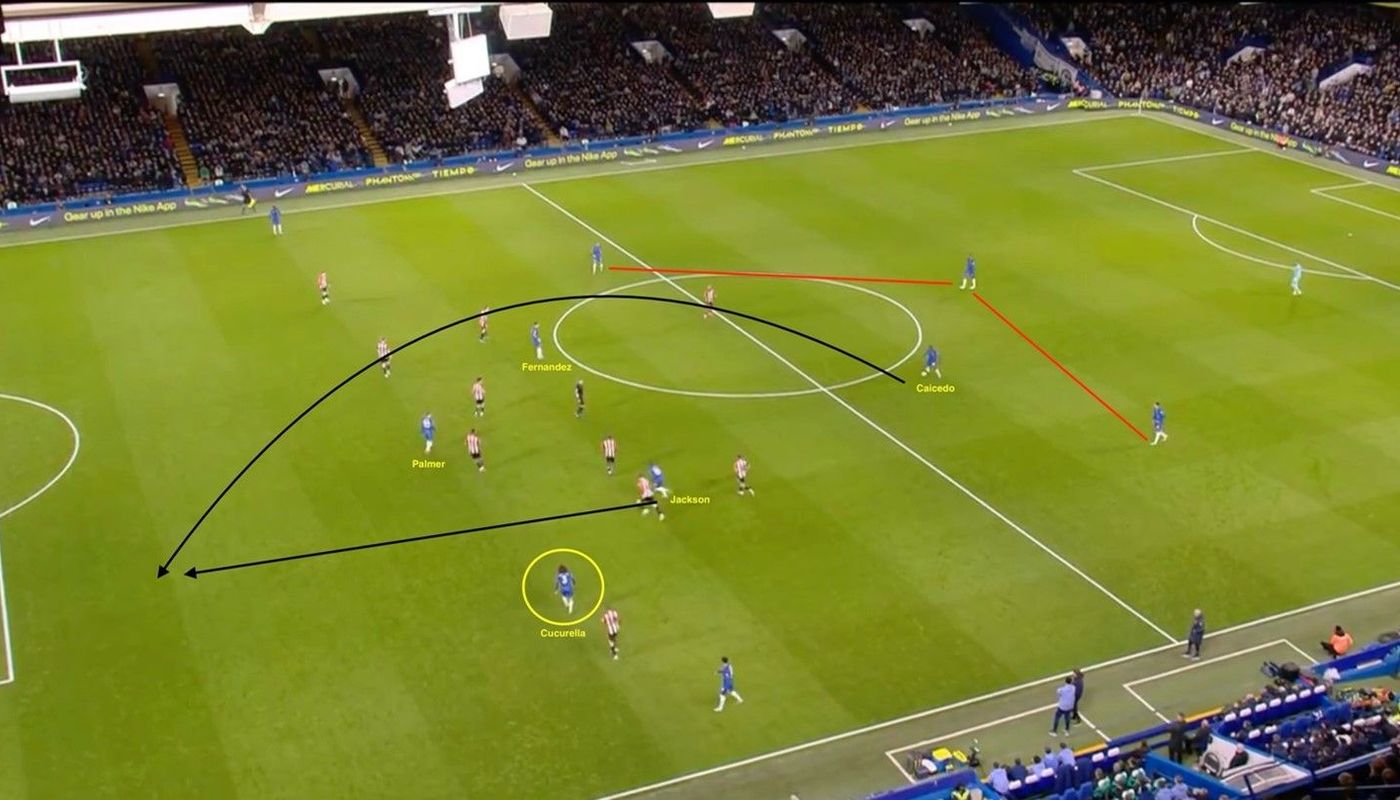
On this occasion they have set up a 3-1-2-4 with left-back Marc Cucurella pushed on into an incredibly advanced position. (circled)
Jackson has simultaneously dragged one of their three central defenders into midfield.
Cucurella’s position creates a 2v1 around the Bees’ right wing-back, Palmer deliberately stands on the middle central defender, leaving a big hole for Caicedo to drop a longer pass into, for the run from deep by Jackson, who is effectively in a 1v1.
Manufacturing this type of situation is smart play, and a terrific example of how Chelsea’s positional play under Maresca is causing teams problems.
Cucurella allowed to create chaos
Maresca had been using Spain international Cucurella as part of his back three when they build from the back, but in recent weeks he has taken on a new role.
Not just inverting but afforded the freedom to join is as a supplementary attacker, the 26-year-old has started taking up positions as a ‘second striker’ or inside forward.
His brilliant diving header against Brentford, running inside wing-back Mads Roerslev to convert Noni Madueke’s cross (below), was a moment of unexpected excellence.
Asking their left-back to take up this kind of position inside the danger zone is becoming more commonplace, but the number of head coaches that encourage it remain in the minority.
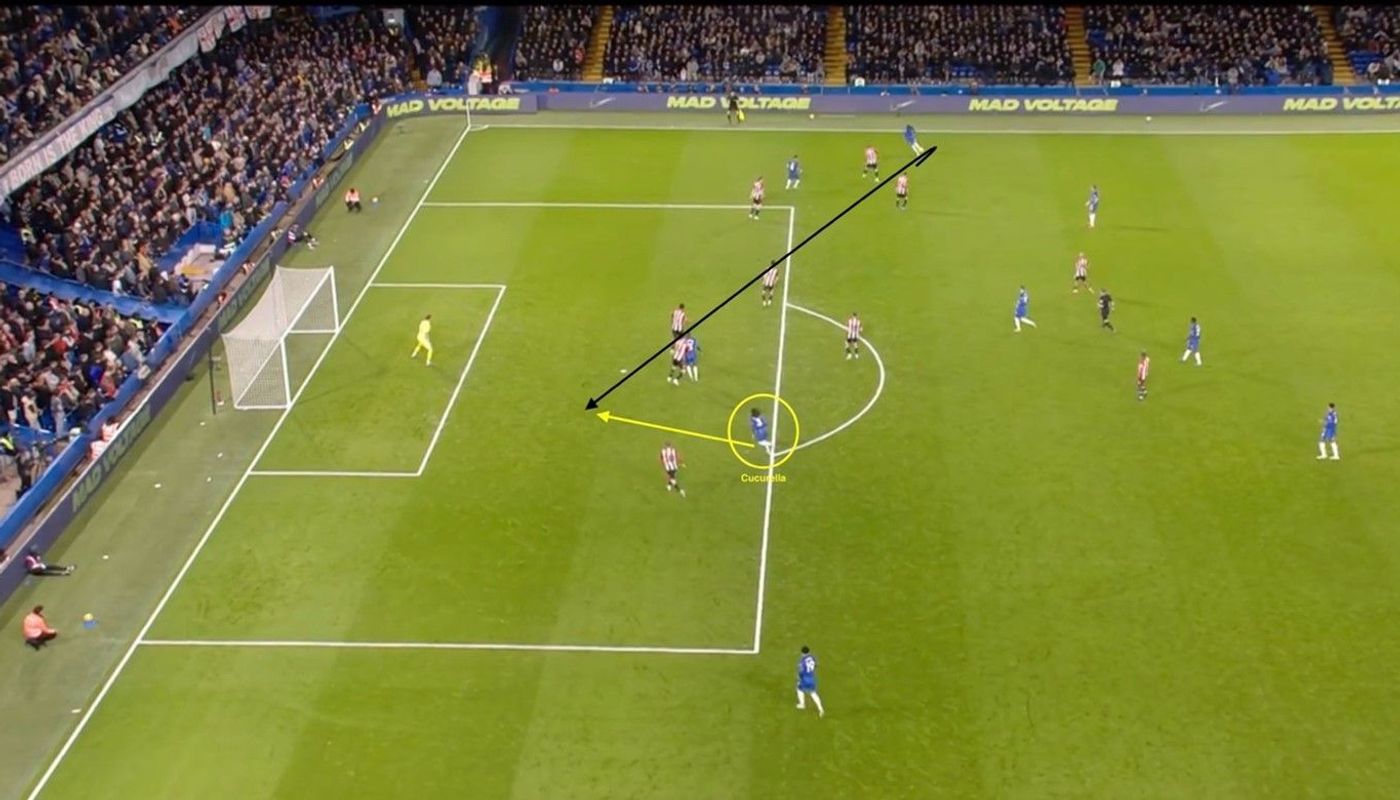
In their previous match at Tottenham Hotspur, he also regularly ventured into the opposition box.
For Fernandez’s goal (below) the left-back’s unusual position distracts Timo Werner, who leaves the Argentinian free in space behind him.
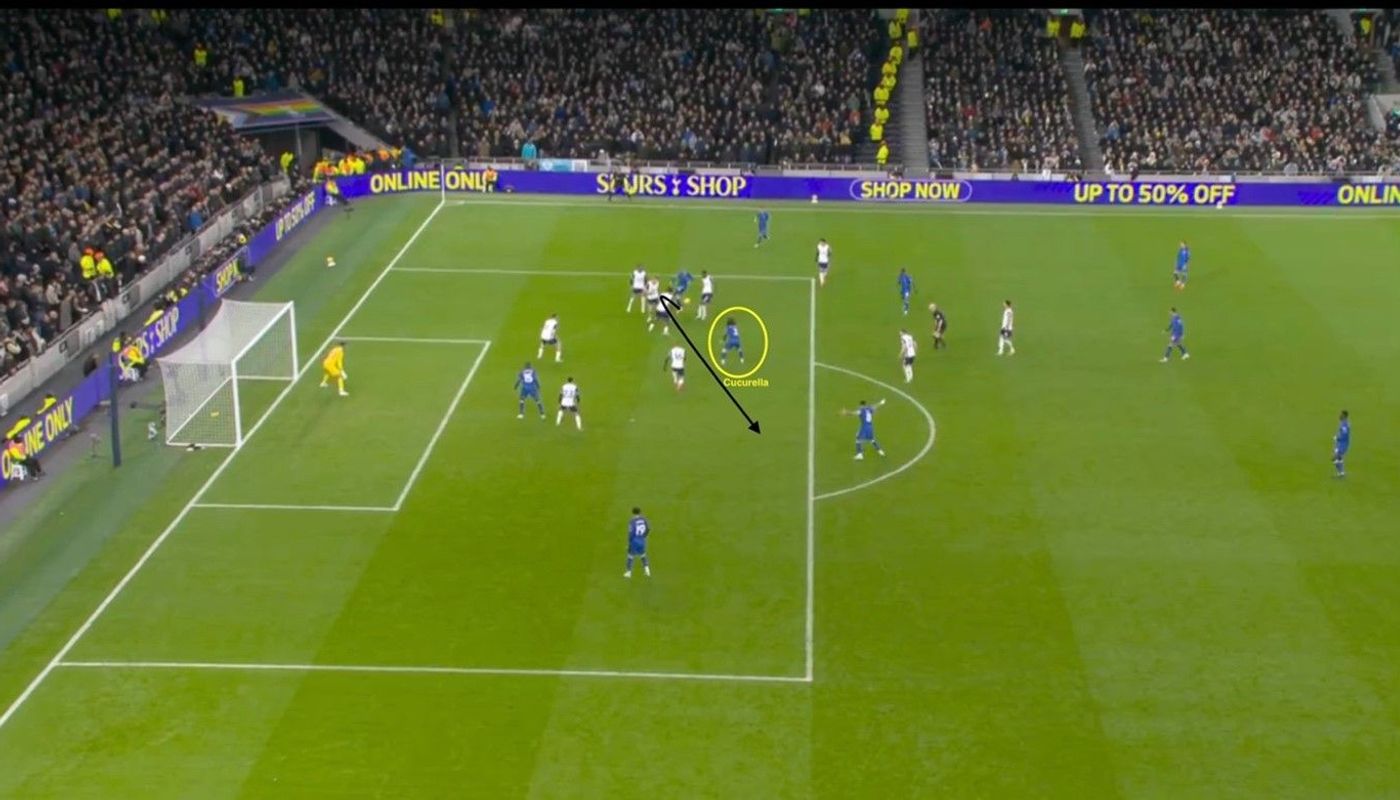
Encouraging such an adventurous role from Cucurella, shows Maresca’s desire to form unpredictable overloads.
Breaking at pace
Maresca’s Chelsea are in essence a possession-based side who want to exert control (averaging a 56.66 per cent share) but they can also hurt Premier League sides on the counter.
The Blues have scored six times from fast breaks already this term – the second highest tally – and nobody has created more chances from those situations among the 20 top-flight teams.
PL sides with the most shots from fast breaks 24/25
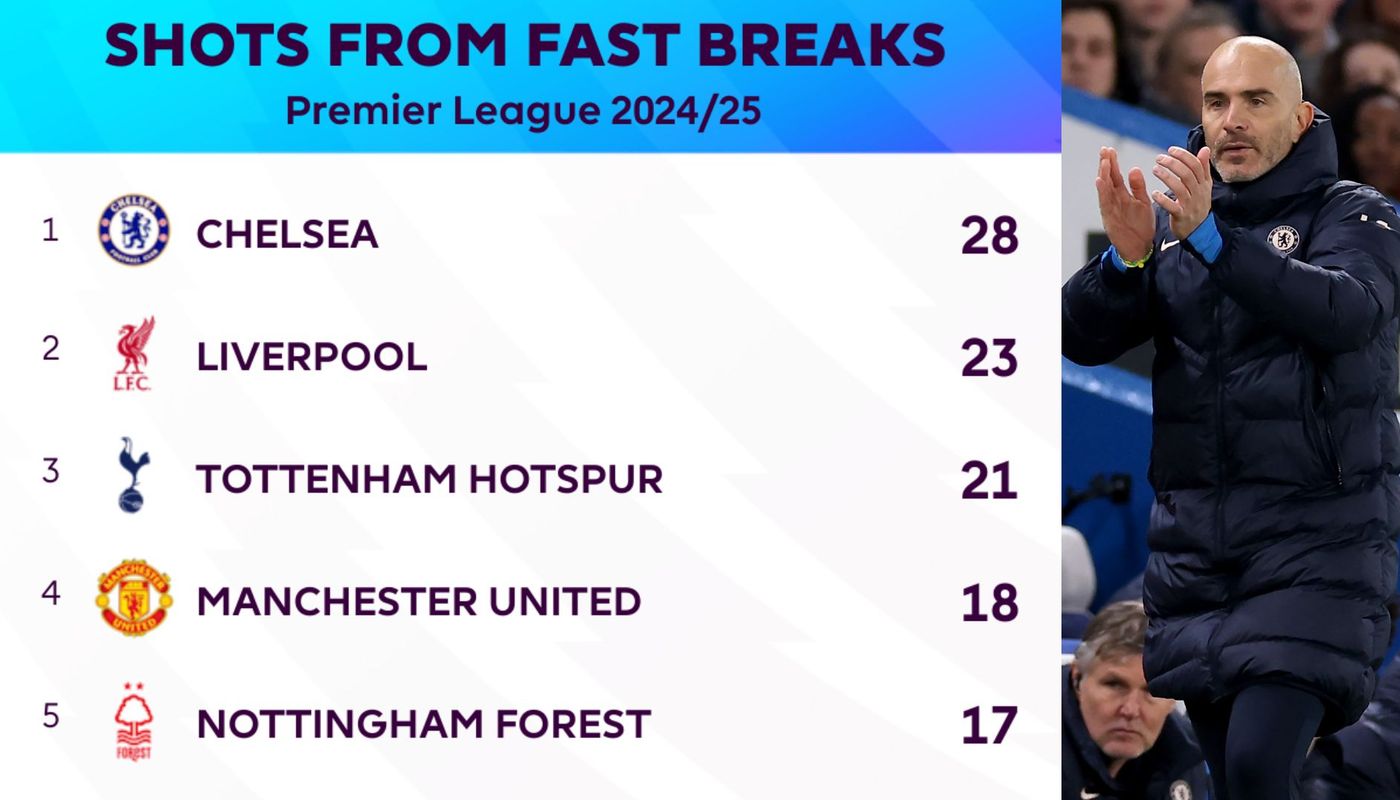
To facilitate this alternative style Maresca needs pacy forwards, so in Jackson, Madueke, Jadon Sancho, Mykhailo Mudryk, and Pedro Neto, he has the right personnel to carry the ball at speed.
The Italian also demands high intensity sprints from all those attackers, so when Chelsea counter, they tend to do so in a very explosive manner.
Going from back to front at lightning-fast speed, no one has launched more direct attacks than the new-look Chelsea.
Most direct attacks PL 2024/25
| Team | Direct attacks |
| Chelsea | 49 |
|---|---|
| Spurs | 43 |
| Fulham | 38 |
| Bournemouth | 33 |
| Wolves | 33 |
| Newcastle | 33 |
Jackson (3) and Palmer (2) have converted five of their six fast break goals, but when it comes to firing off shots from those situations, Madueke is also a major threat.
Remarkably, those three Maresca players all occupy positions in the Premier League’s top five in this department.
PL players most shots from fast breaks 24/25
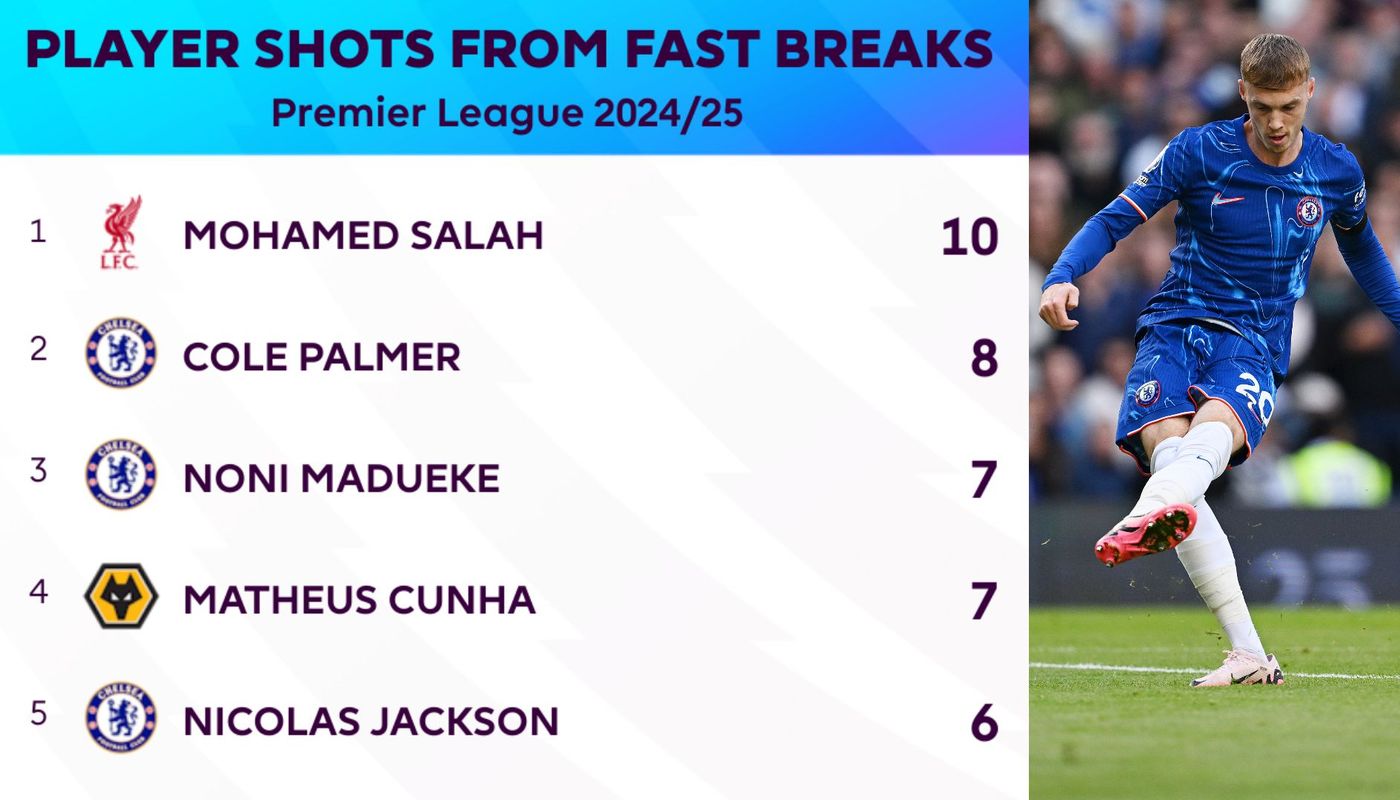
They are talented individuals with speed, but without the intensity of their running (a change their head coach has demanded) this Chelsea trio would not have fashioned as many opportunities.
Locking on with a combative press
when opponents are playing out from the back, especially from goal kicks.
If this means a central defender, such as Levi Colwill, follows their man deep into the other half of the pitch, Maresca is happy to encourage it.
He will also back his players to cope with leaving themselves in a 3v3 or 4v4 at the back.
This freeze frame (below) from their 3-0 win at home to Villa shows how their approach works, and from this press they forced a mistake from which they scored.
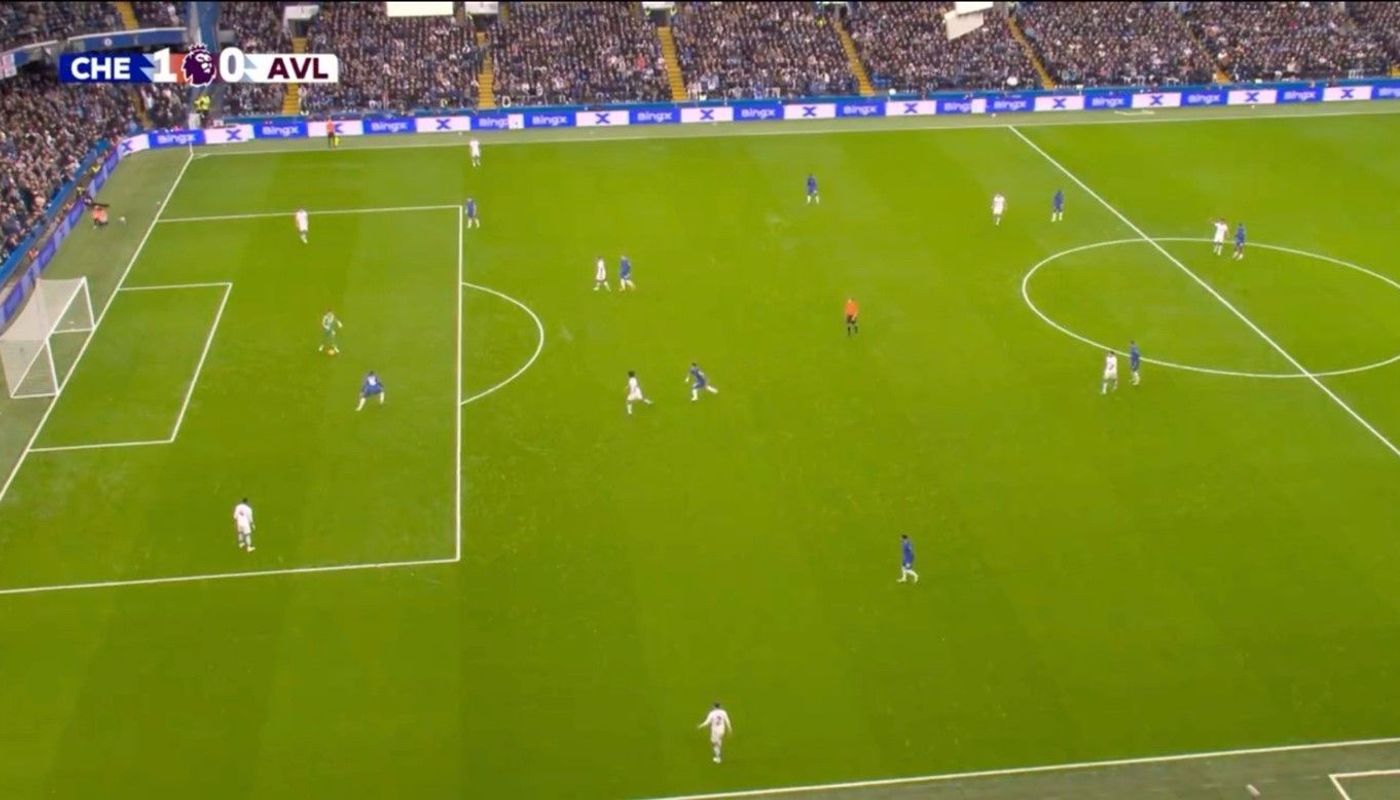
They usually press in a 4-4-2, with Palmer joining Jackson as the first line of Chelsea’s defence.
Only five players have won possession back inside the final third more than the England international (15), with one of those being teammate Caicedo (16).
Jumping out from his central midfield berth, the Ecuadorian is superb at stealing the ball in forward areas.
Maresca also demands high levels of work rate from Palmer and Jackson when the Blues are out of possession.
They rank fourth and fifth for applying the most pressures inside the final third.
Players with the most pressures inside the final third 24/25
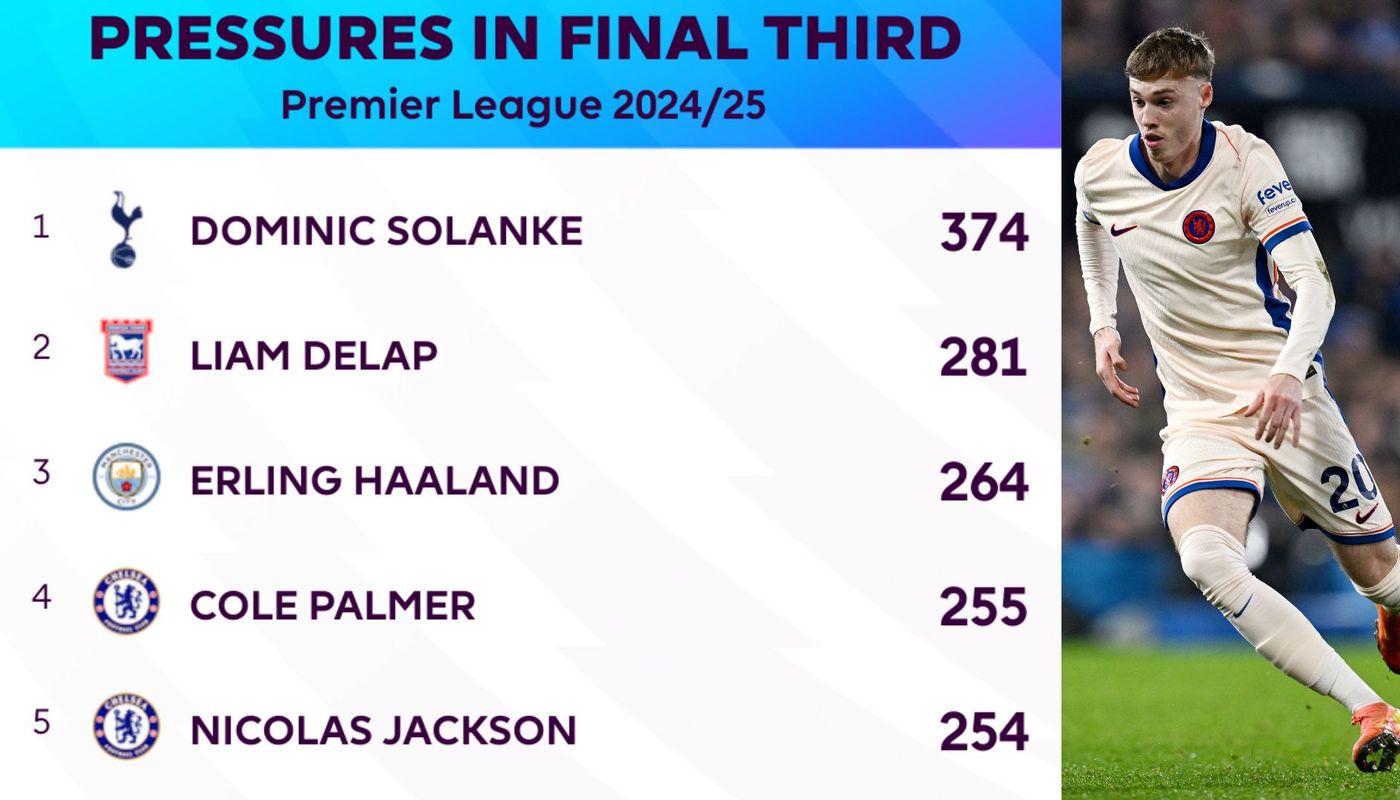
When you throw all this together, it is perhaps no surprise that Andoni Iraola’s AFC Bournemouth are the only side to have produced more shot ending high turnovers than the tireless west Londoners.
Set up to slice through
Chelsea’s 3-3-4 shape in possession is designed to set them up for 4v4s against opposition defences, and Jackson’s second goal at West Ham United (below) is a perfect example of how well that plan can work.
Here you see Cucurella inverted to make up a 3v2 inside the midfield.
The Hammers, preoccupied with screening a pass into Palmer leave themselves light in that domain.
With Chelsea’s wide forwards stationed on opposite touchlines they spread the home back four out, leaving added room down the middle.
Coming towards the ball before spinning behind into space (below), Jackson runs onto Caicedo’s pass to score from a 1v1.
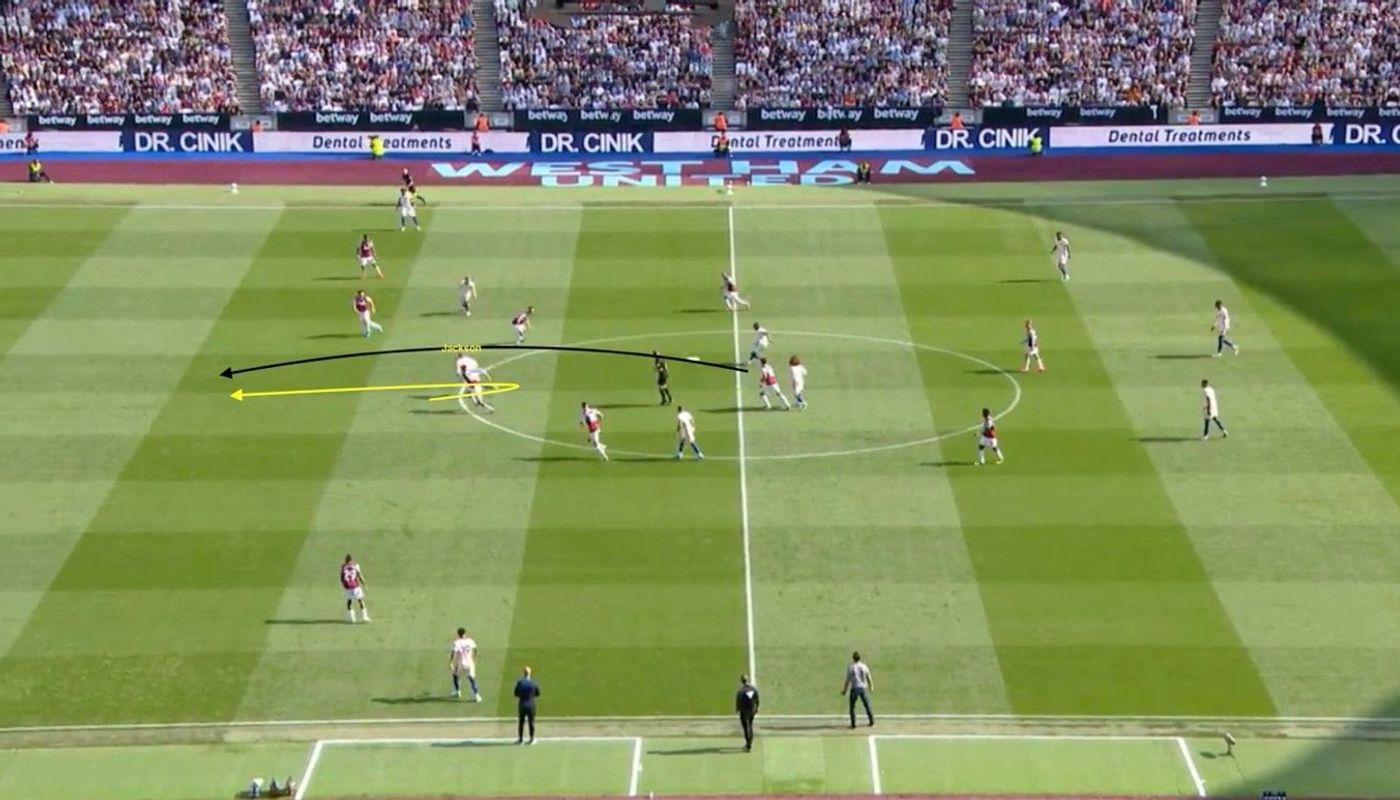
In essence it is simple play, but the Blues have made hay with several similar moves in 2024/25.
Overall, Chelsea have made the second highest number of through balls (43), with the outstanding Palmer (11) lying joint-second in the individual rankings.
Fernandez and Caicedo are two other fine exponents of this pass, and with Jackson always a willing runner, isolating central defenders in 1v1s, it is little wonder they are reaping rewards.
The Senegalese star makes more sprints than anyone else in the Premier League, so the midfield talent at Maresca’s disposal always have an outlet for a forward pass.
PL players with the most sprints 24/25
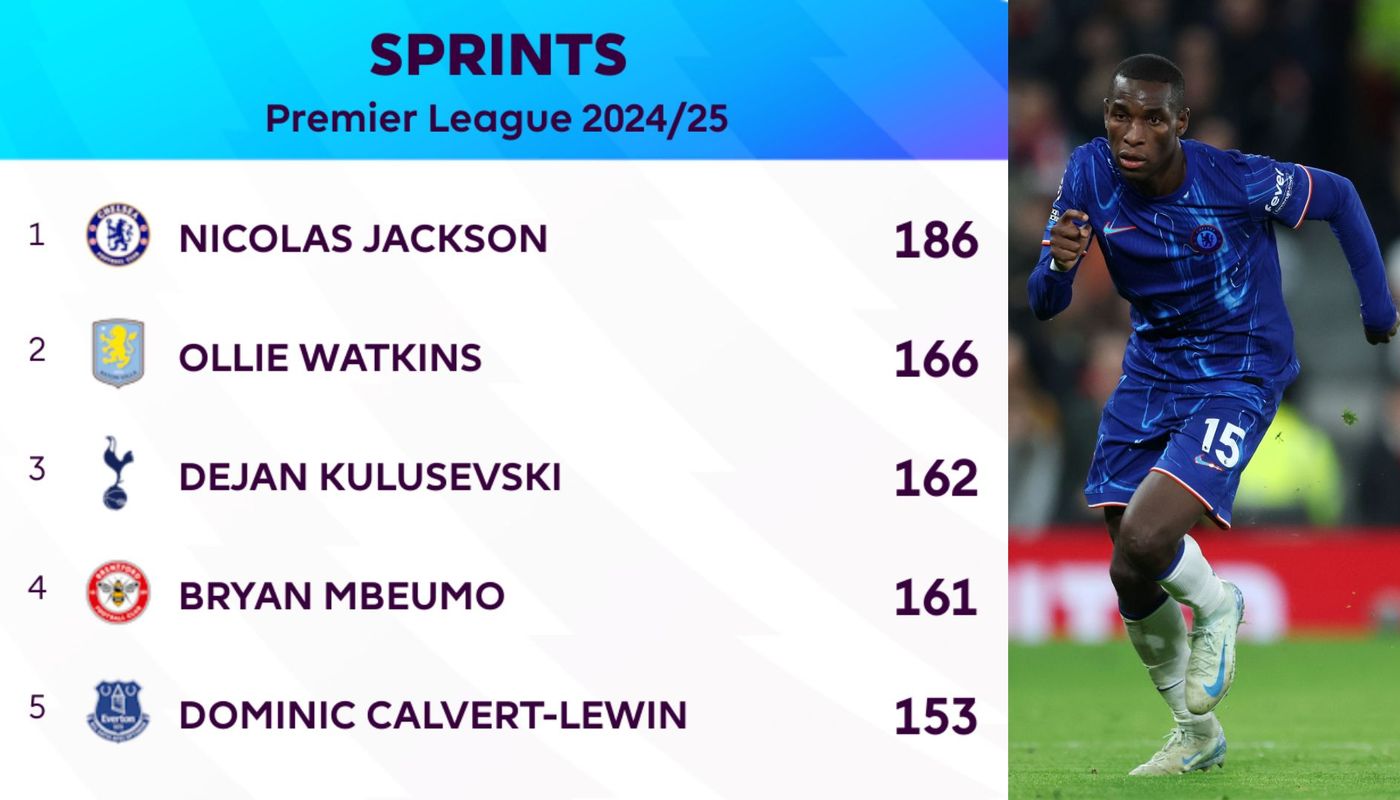
A near faultless start
It is easy to forget this is Maresca’s first ever season coaching as a number one at Premier League level.
He is also working with the youngest squad in the division by some distance.
Youngest squads in the PL 2024/25
| Team | Average starting age |
| Chelsea |
23y 249d |
|---|---|
| Brighton |
25y 293d |
| Bournemouth |
25y 310d |
| Spurs |
25y 322d |
| Southampton |
26y 59d |
This youthfulness may be a benefit to the Italian, as his players are impressionable and hungry to improve.
Yet, to have them challenging for the title in season one – playing such a positive brand of football - feels like a seriously impressive achievement.
Tactically, Maresca has shown high levels of intelligence, developing an identity and approach that suits his personnel.
And there is also a spirit of togetherness forming, which reflects well on his honesty, forthright decision making, clarity of messaging, and man-management skills.
Can they sustain this form and push for top spot in May?
Let’s see, but as it stands there is no doubt their success to this point owes plenty to Maresca’s coaching prowess.